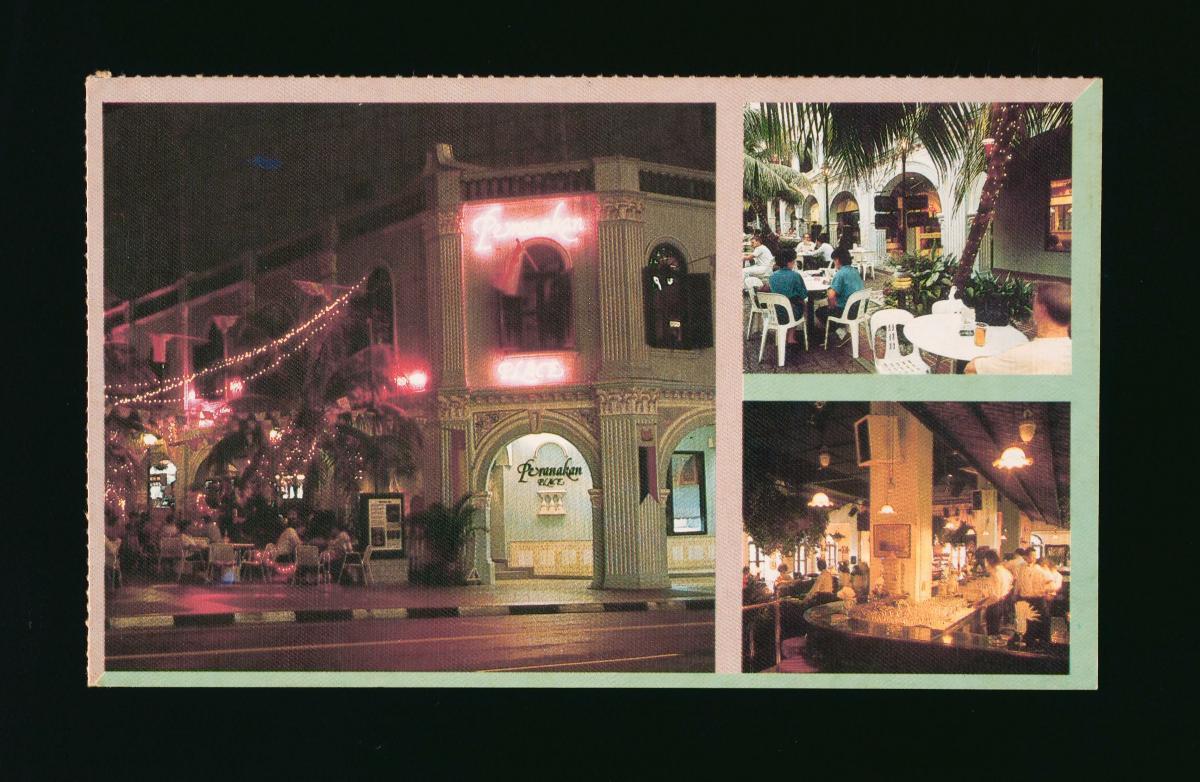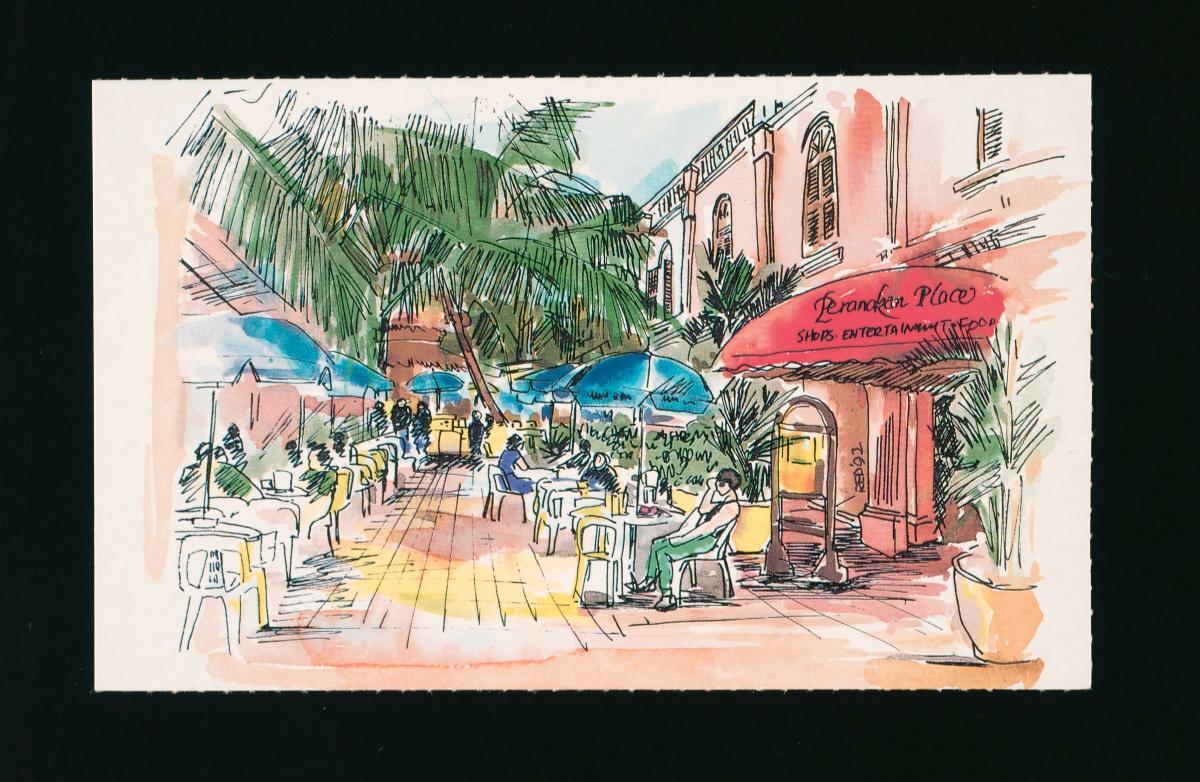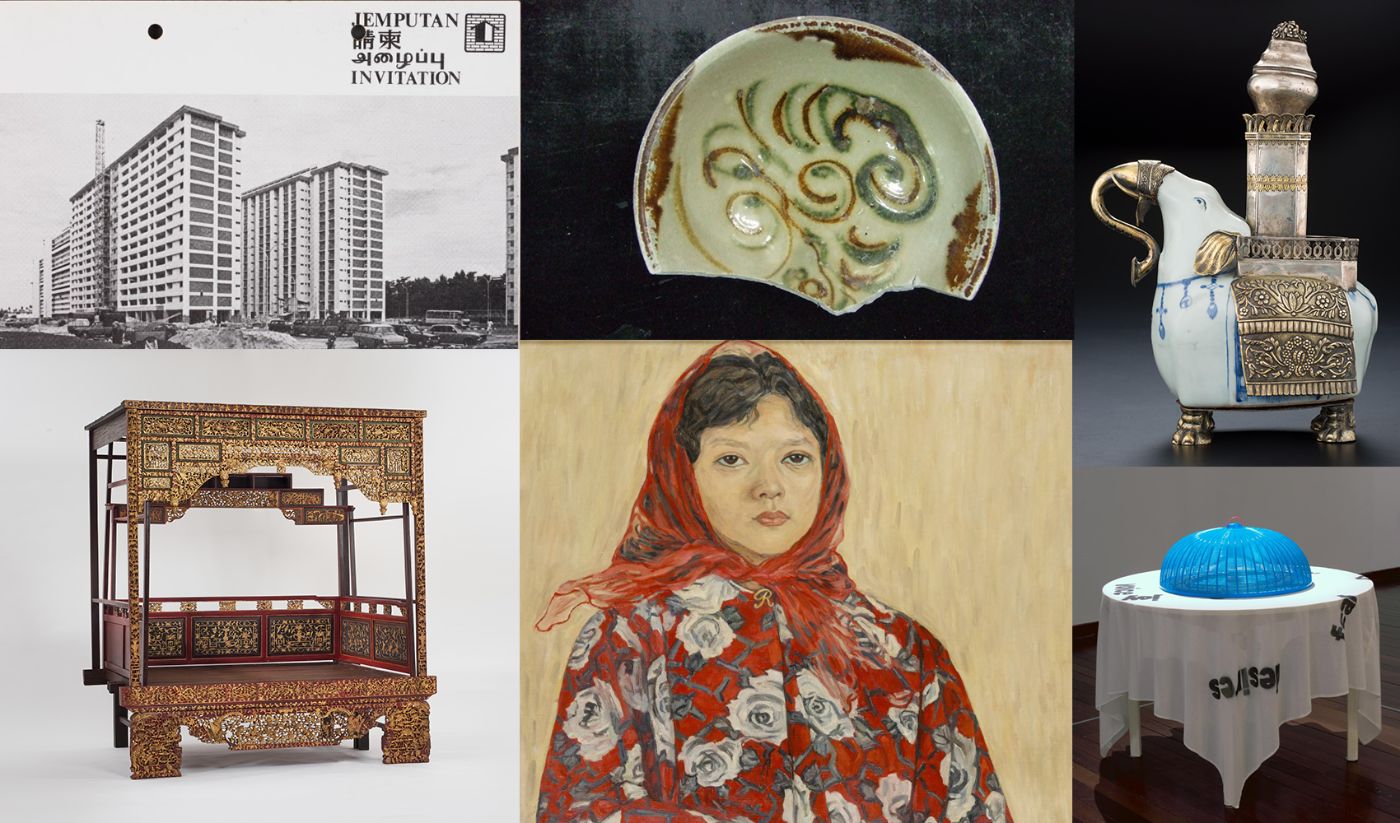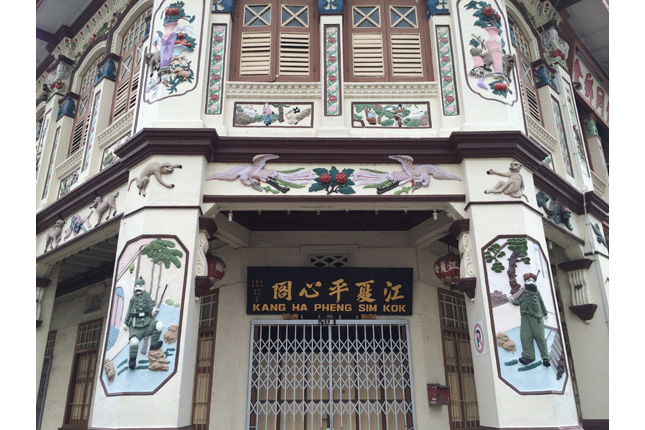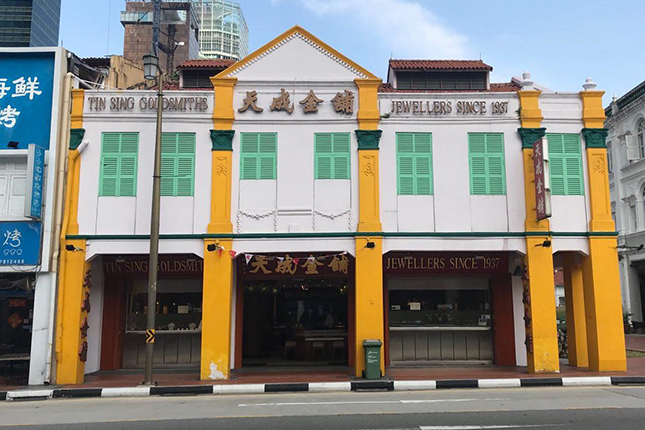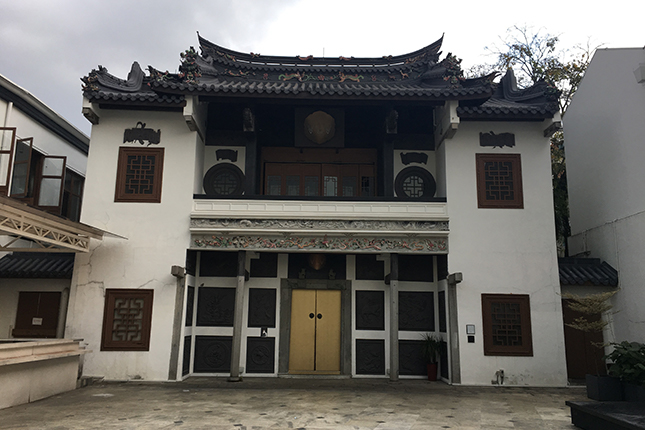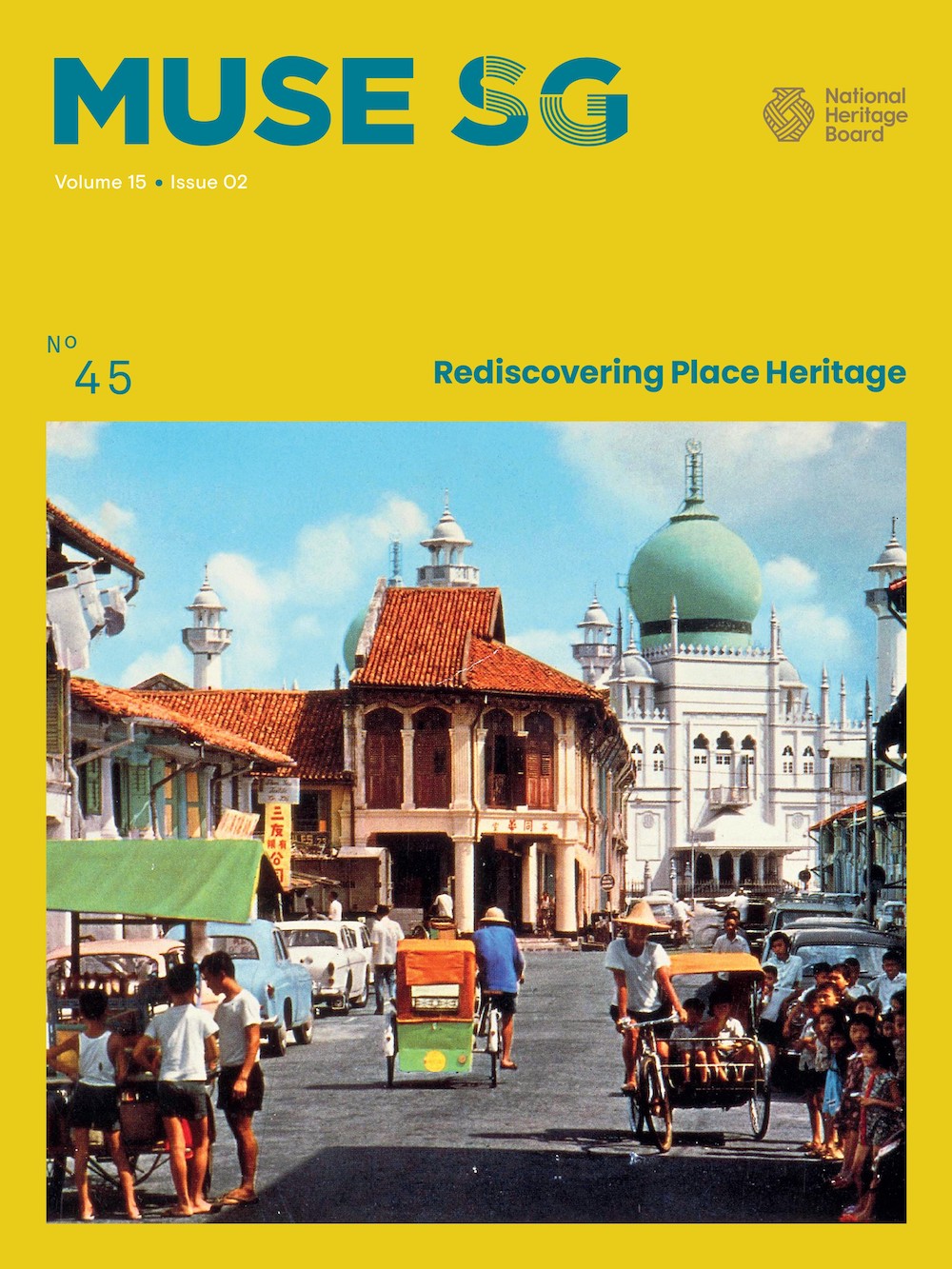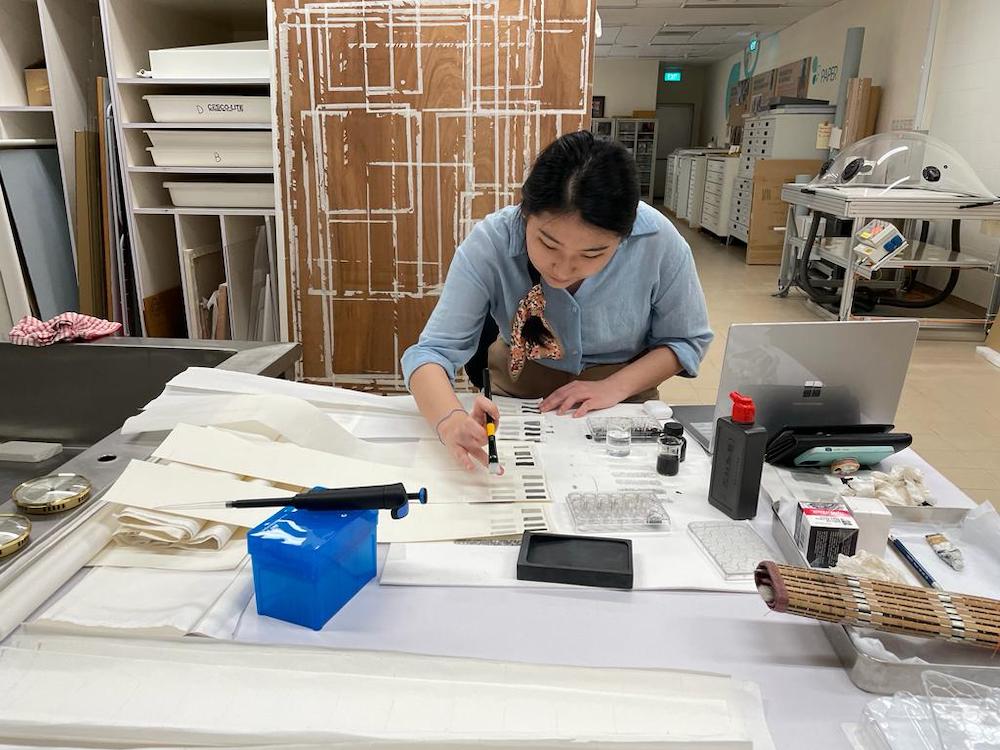
MUSE SG Volume 15 Issue 02 - July 2022
Text by Dr Johannes Widodo, Associate Professor, National University of
Singapore
Read the full
MUSESG Vol. 15 Issue 2
The city is a collective memory, a result of the contributions of all of its
inhabitants accumulated over time.1 Place names, tangible features
such as natural elements and architecture, and intangible aspects like
history, events and communities—all of these form one’s sense of
place. On another, more personal level, we as the city’s inhabitants
ascribe meaning to a place with our memories of it. As such, decisions to keep or change a place, or even erase it,
bear
significant consequences—affecting one’s sense of place and
attachment to the locale.
Place Heritage: Beyond the Tangible
 Two elderly men playing Chinese chess in a hawker centre. Place heritage
comprises not just the built environment, but also communities that have
formed organically over time in a particular locale. Image courtesy of Heng
Lim/Shutterstock.com
Two elderly men playing Chinese chess in a hawker centre. Place heritage
comprises not just the built environment, but also communities that have
formed organically over time in a particular locale. Image courtesy of Heng
Lim/Shutterstock.com
Place heritage traditionally referred to buildings and sites, while heritage
properties were mainly associated with monuments and buildings, without any
relationship to their surrounding landscape.2 Today, the meaning of
place heritage has been expanded to include the interaction between tangible
and intangible aspects rooted in the cultural landscape, referring to a
symbiosis of human activity and the environment.
Place heritage conservation therefore protects and upholds a set of values
that the community has maintained for decades—historical, architectural,
social, cultural, timelessness, economic and contextual.3 Part of it is retaining the
‘authenticity’ of a place, which helps people understand
themselves and their place in society as a whole. In the process of place
conservation, people collectively figure out what identity is, what a sense of
belonging means, and recognise them. The authenticity of a locale’s heritage is thus one of the most crucial
factors in considering how everyone, including residents and visitors, can
develop a genuine appreciation and attachment to a place from the past through to the present for the benefit of future
generations.
 Shophouses along East Coast Road. The iconic red-brick building used to
house Katong Bakery and Confectionery, or ‘Red House Bakery’, a
popular breakfast spot for residents in the area. Established in 1925, Red
House Bakery closed in 2003. Today, the refurbished shophouse is home to
micro red | house, a modern bakery serving up sourdough loaves.
Shophouses along East Coast Road. The iconic red-brick building used to
house Katong Bakery and Confectionery, or ‘Red House Bakery’, a
popular breakfast spot for residents in the area. Established in 1925, Red
House Bakery closed in 2003. Today, the refurbished shophouse is home to
micro red | house, a modern bakery serving up sourdough loaves.
Safeguarding Singapore’s Place Heritage
The priority of Singapore from its independence in 1965 to 1989 was economic
development and housing. In those decades, the city-centre was radically
transformed from a slum and squatter zone into a modern financial and business
hub. However, understanding the importance of place heritage amid the need for
development, the Urban Redevelopment Authority (URA) launched its Conservation
Plan in 1989, which focused on physical conservation and city rebranding
efforts.4 Conservation policies and guidelines at the time were
inclined towards the conservation of the country’s multi-ethnic and
colonial built heritage.
 Boat Quay, c. 1930. Quays are manmade platforms built alongside or into
water to allow ships to dock and unload cargo. Image courtesy of National
Archives of Singapore
Boat Quay, c. 1930. Quays are manmade platforms built alongside or into
water to allow ships to dock and unload cargo. Image courtesy of National
Archives of Singapore
 Present-day Boat Quay. Although the original functions of the harbour and
its associated activities have changed, the place name that carries the
memory of the past is still in use today. Image courtesy of author
Present-day Boat Quay. Although the original functions of the harbour and
its associated activities have changed, the place name that carries the
memory of the past is still in use today. Image courtesy of author
Under the Conservation Plan, conservation status was granted to historic
districts like Chinatown, Little India, Kampong Gelam and areas surrounding
the Singapore River. Later, secondary settlements such as Joo Chiat and
Geylang were also granted conservation status. While the conservation policy
was geared towards protecting built heritage to preserve a distinctly
‘local’ flavour that would resonate with the people, a component
of it was to drive tourism numbers.
URA adopted a stylistic classification for shophouse architecture for various
conservation areas such as Chinatown, Kampong Gelam and Little India.5 This classification is defined
according to linear periodisation, with
meticulous stylistic descriptions of the architectural features: Early
Shophouse Style (1840–1900), First Transitional Shophouse Style (early
1900s), Late Shophouse Style (1900–40), Second Transitional Shophouse
Style (late 1930s) and Art Deco Shophouse Style (1930–60).
According to URA’s conservation guidelines, the facades of shophouses
are to be retained as a priority, with some flexibility in the
building’s interior to support adaptive reuse. Conserving the facades of
old shophouses helped create a visual identity for these places, which were in
turn also rebranded accordingly as ‘Little India’ and
‘Chinatown’ to impress upon tourists the identity of these
historic areas.
 The former Singapore Improvement Trust flats built in the 1930s for customs
workers in the Chinatown area have been repurposed for commercial
activities, 2004. Image courtesy of author
The former Singapore Improvement Trust flats built in the 1930s for customs
workers in the Chinatown area have been repurposed for commercial
activities, 2004. Image courtesy of author
Alongside the conservation work of URA was the former Preservation of
Monuments Board, known today as the Preservation of Sites and Monuments (PSM),
under the National Heritage Board. URA’s mandate is to carry out
conservation albeit allowing modifications to accommodate development, while
PSM is the national preservation authority whose mandate is to identify
structures and places of national significance and gazette these for
preservation as national monuments. One of its functions is to ensure the full
authenticity of the preserved buildings and sites.6
Due to the focus on the conservation and preservation of built heritage from
the late 1980s to the early 2000s, little attention was paid to preserving
existing communities, their ways of life or the sociocultural fabric. Thus,
much intangible heritage was lost in those decades due to gentifrication as
old businesses were driven out by market forces and communities relocated due
to development. But this was to change in the new millennium, when a more
holistic manner of conservation became the overarching framework.
The Urban Redevelopment Authority’s stylistic classification for
shophouse architecture in the conservation area of Little India:
Early Shophouse Style (60 Buffalo Street)
First Transitional Shophouse Style (39 Campbell Lane)
Late Shophouse Style (47 Desker Road)
Art Deco Shophouse Style (35 Cuff Road)
Holistic Conservation
Changes in the political climate and public aspirations saw the government
gradually shift from a top-down approach to a more participatory strategy for
urban conservation in the early 2000s. This was partly to nurture
Singaporeans’ sense of ownership and stewardship of the city’s
architectural and place legacy. The public desired a more inclusive framework
for conservation, where a balance could be struck between conservation and
redevelopment. Government policy increasingly moved towards holistic
conservation—an integrated, synergistic approach beyond physical
structures to include communities and activities that contribute to a locale.
From August 2000 to May 2001, URA held public consultations in the urban
planning process for the Concept Plan 2001.7 Ideas and
contributions from the public were gathered through public forums, exhibitions
and dialogues before the Concept Plan was finalised at the end of 2001. A
similar process was implemented in the following year when the Master Plan
2003 was being drafted. Specifically, the Ministry of National Development
appointed three subject groups comprising professionals, representatives from
interest organisations and laypeople to study proposals relating to: (1) Parks
and Waterbodies Plans and Rustic Coast, (2) Urban Villages and Southern Ridges
and Hillside Villages, and (3) Old World Charm. The ideas and recommendations
were incorporated in the draft of the Master Plan 2003.
 A Buddhist-Taoist makeshift shrine, popularly known as Ci Ern Ge, under an
old banyan tree in Toa Payoh Central, 2005. The tree and the shrine were
interwoven into the new urban fabric when the town centre was built around
1966–70. Image courtesy of author
A Buddhist-Taoist makeshift shrine, popularly known as Ci Ern Ge, under an
old banyan tree in Toa Payoh Central, 2005. The tree and the shrine were
interwoven into the new urban fabric when the town centre was built around
1966–70. Image courtesy of author
 The restored Buddhist-Taoist shrine (photographed in 2022) in Toa Payoh
after the tree collapsed due to a storm in 2013. The restoration was
supported by the Singapore Toa Payoh Central Merchants’ Association,
against the initial plan to clear the shrine by the National Parks Board.
Image courtesy of author
The restored Buddhist-Taoist shrine (photographed in 2022) in Toa Payoh
after the tree collapsed due to a storm in 2013. The restoration was
supported by the Singapore Toa Payoh Central Merchants’ Association,
against the initial plan to clear the shrine by the National Parks Board.
Image courtesy of author
No longer were policymakers focused solely on built heritage; communities,
trades, traditions and activities could all contribute to the ‘old-world
charm’ of a place. Such a holistic conservation approach thus includes
modern and less aesthetically significant structures. The framework is
multidimensional, encompassing buildings, traffic patterns, streetscapes, open
spaces, and views. Holistic conservation therefore necessitates
multidisciplinary participation at both local and national levels, and it
involves all conservation stakeholders—users, owners, heritage
supporters and decision-makers.
Voices from the Ground: Heritage and Nature Advocacy
An impetus for the above-mentioned policy changes can be attributed to the
active engagement with government bodies by heritage societies. The Singapore
Heritage Society was established in 1986 as a non-profit organisation
dedicated to preserving, transmitting and promoting Singapore’s history,
legacy and identity.8 The society advocated for the future use of
the former KTMB (Keretapi Tanah Melayu Berhad) Rail Corridor and the Bukit
Brown Cemetery, working together with the Nature Society (Singapore).
The Nature Society (Singapore) has a history that stretches back to 1921, and
it is presently a nongovernmental organisation that promotes nature
appreciation, the conservation of natural resources, and engagement in local,
regional and global initiatives to preserve biodiversity.9 Its
advocacy work has seen success in the now-conserved Sungei Buloh Wetlands
Reserve and Chek Jawa in Pulau Ubin. In 2015, the Nature Society and the
Singapore Heritage Society collaborated on
Green Rail Corridor: A Guide to the Ecology and Heritage of the Former
Railway Land—a comprehensive map of the former rail corridor that explores its
diverse ecology and cultural heritage.
 Visitors walking along the Rail Corridor before the removal of the rail,
2011. Image courtesy of author
Visitors walking along the Rail Corridor before the removal of the rail,
2011. Image courtesy of author
Heritage advocates based online, particularly on social media, have also
mushroomed organically within the last decade in Singapore. Today, we have
social media groups and other online communities made up of individuals with a
shared interest in place heritage: Facebook groups Tiong Bahru Heritage
Trails10 and Heritage Singapore – Bukit Brown Cemetery;11
blogs ‘Bukit Brown: Living Museum of History and Heritage’12
and ‘All Things Bukit Brown: Heritage, Habitat, History’;13
websites The Green Corridor,14 Wild Singapore15 and
Singapura Stories;16 and many more.
In 2014, the International Council on Monuments and Sites (ICOMOS) Singapore
was founded as a non-governmental organisation consisting of professional
heritage practitioners who have worked closely on public and private projects
pertaining to Singapore’s heritage sites. ICOMOS is an advisory body to
UNESCO which actively contributes to the implementation of the World Heritage
Convention.
A more recent addition to the ground-up heritage landscape is the non-profit
group Documentation and Conservation of Buildings, Sites and Neighbourhoods of
Modern Movement, or Docomomo Singapore, established in 2021.18 Docomomo Singapore aims to create
awareness among Singaporeans on the
nation’s modern built heritage. Besides research and advocacy work, it
also works with partners to find creative, sustainable and inclusive ways to
conserve and retrofit the modern built heritage of Singapore.
Social media’s influence on the increasing interest in heritage and
sense of belonging among the younger generation cannot be underestimated. It
will continue to be an essential platform of engagement that can change
people’s perception of and their attachment to heritage places. Needless
to say, the proliferation of heritage groups online and offline has greatly
increased community involvement in heritage-related issues, contributing to a
stronger shared ownership of Singapore’s place heritage.
A Shared Responsibility
Although the National Heritage Board is the official custodian of
Singapore’s heritage, non- governmental organisations and other
community movements are crucial in the stewardship of Singapore’s
heritage. It is the responsibility of everyone to preserve and celebrate the
shared heritage of our diverse communities, as the integrity of the tangible
and intangible heritage entrusted to us by past generations depends on us.
 A resident of Pulau Ubin sharing stories about the community and place to a
group of visitors, 2019. Image courtesy of author
A resident of Pulau Ubin sharing stories about the community and place to a
group of visitors, 2019. Image courtesy of author
Under our generation’s stewardship, it may be destroyed, damaged,
altered or abused; on the other hand, it may also be restored, repaired,
maintained, conserved or preserved. Conserving our natural and cultural
legacies is an act of managing changes, extending the past to the present and
the future for the current and subsequent generations—and this requires
the active involvement of everyone, not only the government.
The importance of the retention of identities through the preservation and
conservation of natural and cultural heritage—especially place
heritage—will become even more crucial as the development and
redevelopment of our urban areas continually expand outwards to cater to the
needs of a larger population and economic growth. But we must never forget
that we need to preserve the people’s memories, identities and sense of
place for future generations. Heritage conservation is, after all, about the
people.






















